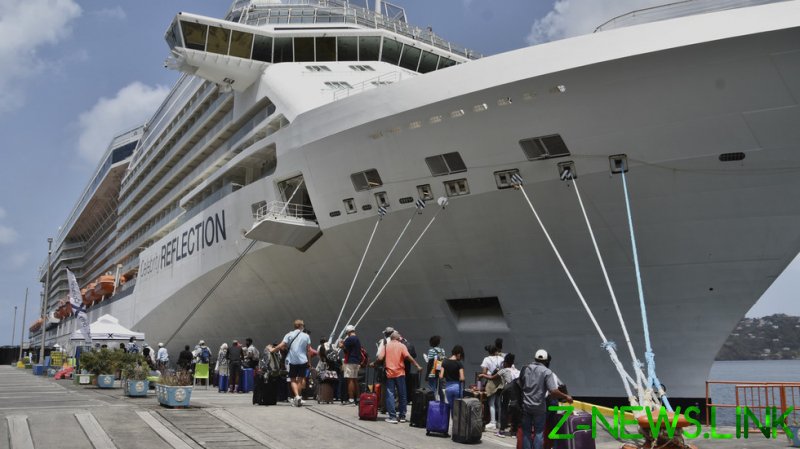
The rescue operation came at the end of a week of eruptions that began on April 9 and has already forced some 20,000 people to flee.
Royal Caribbean Cruises’ Celebrity Reflection moored in the harbor in the capital, Kingstown, as families with young children in tow, as well as groups of students from the Trinity School of Medicine, queued anxiously to flee the volcanic fury.
Close contacts of Covid-19-infected people were barred from boarding the liner, amid official travel advisories about cruise ships issued by the US Centers for Disease Control and Prevention, which added that evacuees would need to arrange passage back to their home countries once safely off the island.
Meanwhile, thousands of locals were stuck in emergency shelters with an uncertain future ahead – a situation exacerbated by contaminated water supplies and the sheer weight of volcanic ash causing the roofs of their abandoned homes to collapse.
Friday’s explosion was “big enough to punch a hole through the clouds,” according to Richard Robertson, lead scientist at the University of the West Indies Seismic Research Center, who added that the pillar of ash and smoke, “probably got up to 8,000 meters [26,000 feet].”
A similar volcanic event in 1902 continued for months and ultimately killed an estimated 1,700 people, though there have been no deaths reported during this past week’s eruption, thanks to advance warnings, which allowed people to escape in plenty of time.
Satellites operated by NASA, the US’ National Oceanic and Atmospheric Administration (NOAA), and Maxar Technologies captured the ferocity of the initial blast and the ensuing extreme weather and atmospheric events in its wake.
NOAA’s GOES-16 weather satellite and Joint Polar Satellite System captured time-lapse footage of the tumultuous atmosphere above the volcano as it continued to spew ash and dust high into the sky, which subsequently rained down on the beleaguered Caribbean island.
Think your friends would be interested? Share this story!
© 2021, paradox. All rights reserved.





